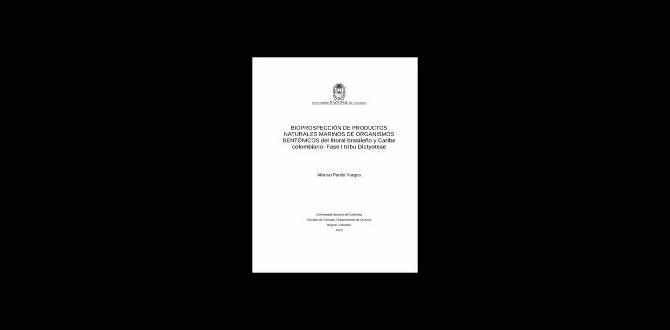The best time to visit Austria for an easy and peaceful trip is during the shoulder seasons: spring (April to May) and autumn (September to October). You’ll enjoy pleasant weather for sightseeing, fewer tourists, and often better prices, making your Austrian adventure more relaxed and affordable.
Planning a trip to Austria can be exciting, but figuring out the perfect time to go might feel a bit overwhelming. Many travelers worry about crowds or hitting unpredictable weather, leading to a less-than-ideal vacation. We understand how important it is to have a smooth, enjoyable journey, where you can truly soak in the beauty and culture without the stress. That’s why we’ve put together this easy guide to help you pinpoint the ideal time for your Austrian adventure. Get ready to discover when to experience Austria at its most serene and delightful!
—
Austria Best Time To Visit: Understanding the Seasons
Austria, a jewel in the heart of Europe, offers a captivating blend of imperial history, stunning alpine landscapes, and vibrant city life. However, like any popular destination, its appeal fluctuates with the seasons, impacting crowd levels, weather patterns, and overall travel experiences. For those seeking an “easy and peaceful” visit, understanding these seasonal shifts is key to unlocking the best of Austria without the hustle and bustle.
The core of this guide is to help you find that sweet spot – a time when you can wander through charming Viennese streets, hike in the breathtaking Alps, or explore historic Salzburg with ease. We’ll break down what each season offers, focusing on how it contributes to a more relaxed and peaceful travel experience.
Spring in Austria: A Gentle Awakening
Spring in Austria is a magical transition period. As winter’s snow begins to melt, the country bursts into a symphony of colors. Daffodils and tulips carpet the meadows, the air becomes crisp and fresh, and the atmosphere is generally more relaxed than during peak summer. It’s a season of new beginnings, mirroring the rejuvenation of the landscape.
Weather in Spring
April and May generally offer mild temperatures, perfect for exploring. You might encounter occasional spring showers, but these are usually brief. Average temperatures can range from 10°C to 20°C (50°F to 68°F), making it comfortable for walking and outdoor activities without the intense heat of summer.
Pros of Visiting in Spring
- Fewer Crowds: Outside of Easter holidays, spring sees significantly fewer tourists than summer. This means shorter lines at attractions and a more intimate experience in popular cities and natural sites.
- Lower Prices: Accommodation and flight prices tend to be more affordable in spring compared to the peak summer months.
- Beautiful Scenery: Witness the landscape come alive with blooming flowers and lush greenery. Alpine meadows start to awaken, offering stunning vistas.
- Pleasant Weather: Mild temperatures are ideal for sightseeing, hiking, and enjoying outdoor cafes without being too hot or too cold.
Cons of Visiting in Spring
- Variable Weather: While often pleasant, spring weather can be unpredictable. You might experience a mix of sunshine, rain, and even some late snow in higher altitudes.
- Limited High-Altitude Activities: Some higher mountain trails or activities might still be inaccessible due to lingering snow, especially in early spring. Ski resorts are generally closed.
Summer in Austria: The Bustling Peak
Summer, from June to August, is Austria’s most popular travel season. The weather is warm and sunny, ideal for outdoor adventures, festivals, and enjoying the country’s many lakes and mountains. However, this popularity also means larger crowds and higher prices, which might not align with a desire for an “easy and peaceful” trip.
Weather in Summer
Summers are generally warm to hot, with average daytime temperatures between 20°C and 30°C (68°F to 86°F), sometimes reaching higher. Evenings are pleasant, making them perfect for al fresco dining.
Pros of Visiting in Summer
- Best Weather for Outdoor Activities: Ideal for hiking, cycling, swimming in lakes, and exploring national parks.
- Long Daylight Hours: Enjoy more time for sightseeing and adventuring.
- Numerous Festivals and Events: Summer is a vibrant time with many cultural events, concerts, and local festivals happening across the country.
Cons of Visiting in Summer
- Large Crowds: Major attractions, cities, and popular tourist spots can be very crowded.
- Higher Prices: Accommodation, flights, and sometimes even attraction tickets are at their peak prices.
- Heat: Some days can be uncomfortably hot, especially in cities.
Autumn in Austria: An Idyllic Retreat
Autumn, from September to October, is arguably one of the best times to visit Austria for a peaceful experience. The summer crowds dissipate, the weather remains pleasant, and the landscapes transform into a breathtaking tapestry of golden and red hues. It offers a serene yet vibrant atmosphere.
Weather in Autumn
Early autumn (September) is particularly lovely with comfortable temperatures, often sunny days, and crisp evenings. Temperatures typically range from 10°C to 20°C (50°F to 68°F) in early autumn, gradually cooling down in October. Expect clear skies and beautiful light for photography.
Pros of Visiting in Autumn
- Fewer Crowds: Similar to spring, autumn offers a significant reprieve from summer tourist numbers, allowing for a more relaxed exploration.
- Stunning Fall Foliage: The alpine and forest landscapes are spectacular, painted in vibrant autumn colors.
- Mild Temperatures: Comfortable weather for sightseeing and outdoor activities.
- Harvest Season: Enjoy delicious seasonal produce, wines, and culinary festivals.
- Affordable Options: Prices for accommodation and flights can be more budget-friendly than in summer.
Cons of Visiting in Autumn
- Shorter Daylight Hours: As the season progresses into October, days become shorter.
- Increasingly Cooler Weather: Late autumn can become quite chilly, and snow may start to appear in higher elevations.
- Some Attractions May Close: Certain seasonal tourist facilities, especially in very remote alpine areas, might begin to close down towards the end of October.
Winter in Austria: A Snowy Wonderland
Winter, from November to March, transforms Austria into a snow-covered paradise, especially renowned for its world-class skiing and charming Christmas markets. While magical, this season is primarily for winter sports enthusiasts or those specifically seeking the festive holiday atmosphere. It’s often busy with skiers and holiday travelers.
Weather in Winter
Winters are cold, with temperatures often dropping below freezing, especially in mountainous regions. Snowfall is common and can be heavy, creating idyllic winter scenes. Daytime temperatures can range from -5°C to 5°C (23°F to 41°F).
Pros of Visiting in Winter
- Winter Sports: Excellent conditions for skiing, snowboarding, and other winter activities in the Alps.
- Magical Christmas Markets: Experience enchanting festive markets from late November through December.
- Beautiful Snowy Landscapes: The country looks like a fairy tale blanketed in snow.
Cons of Visiting in Winter
- Very Cold Weather: Requires substantial warm clothing and limits extensive outdoor non-skiing activities.
- Crowded Ski Resorts and Christmas Markets: These popular spots can be very busy.
- Higher Prices (around holidays): Christmas and New Year periods see a surge in prices and demand.
- Limited Access to Some Areas: Certain roads or hiking trails may be closed due to snow.
—
Finding Your “Easy & Peaceful” Sweet Spot
Based on the seasonal breakdown, the best times to visit Austria for an easy and peaceful experience are spring (April-May) and autumn (September-October). These shoulder seasons perfectly balance pleasant weather with a noticeable decrease in tourist crowds, making your explorations more relaxed and your interactions more genuine. They also often come with more budget-friendly travel costs.
If you are traveling with young children or require specific accommodations like adult or child diapers for extended trips, these shoulder seasons are also ideal. They offer a less rushed pace, allowing for easier management of travel necessities and ensuring comfort without the pressure of peak season crowds. Packing for variable spring or autumn weather is also manageable with versatile layers, ensuring you’re prepared for a comfortable journey.
Comparing Shoulder Seasons: Spring vs. Autumn for Peacefulness
Both spring and autumn excel in offering a peaceful travel experience. The choice between them often comes down to personal preference and specific interests.
| Feature | Spring (April-May) | Autumn (September-October) |
| :—————— | :————————————————– | :——————————————————- |
| Crowd Levels | Low to moderate (except Easter) | Low to moderate |
| Weather | Mild, warming, potential for rain/late snow | Mild, crisp, sunny days, cooler evenings, less rain |
| Scenery | Blooming flowers, green landscapes, awakened nature | Vibrant fall foliage, golden landscapes |
| Activities | Sightseeing, city tours, lower-altitude hiking | Sightseeing, hiking, harvest festivals, wine tasting |
| Prices | Generally lower than summer | Generally lower than summer |
| Overall Vibe | Rejuvenating, fresh, gentle | Cozy, vibrant colors, tranquil |
For an absolutely peaceful experience, early autumn (September) might slightly edge out spring, as it typically has more consistently stable and sunny weather than spring, which can sometimes be a bit more unpredictable with lingering winter influences. However, both are excellent choices for avoiding the peak summer rush.
—
Must-Visit Destinations During Shoulder Seasons
Austria is packed with incredible places to see, and visiting during its quieter seasons means you can enjoy them more intimately. Here are some top destinations that shine during spring and autumn:
Vienna: Imperial Grandeur, Unhurried
The Austrian capital is majestic year-round, but in spring and autumn, you can truly savor its imperial palaces, grand boulevards, and café culture without the throngs of summer tourists. Imagine strolling through Schönbrunn Palace gardens as they begin to bloom in spring, or admiring the autumn colors in the Prater park. The Vienna Pass (https://www.viennapass.com/) can still be a great value, as you’ll be able to use it more efficiently with fewer queues.
What to Do in Vienna (Spring/Autumn):
- Explore Schönbrunn Palace and Gardens.
- Visit St. Stephen’s Cathedral.
- Wander through the historic city center (Innere Stadt).
- Enjoy traditional coffee houses and Sachertorte.
- Visit the Belvedere Palace for Klimt’s “The Kiss.”
Salzburg: Mozart’s City in Serenity
The birthplace of Mozart and setting for “The Sound of Music,” Salzburg is enchanting in any season. During spring and autumn, the charming Old Town (Altstadt) is more accessible, and the views of the Hohensalzburg Fortress are breathtaking against a backdrop of blooming flowers or autumn foliage. Taking a leisurely walk along the Salzach River becomes even more pleasant.
What to Do in Salzburg (Spring/Autumn):
- Explore the Hohensalzburg Fortress.
- Wander through Mirabell Gardens (especially beautiful in spring).
- Visit Mozart’s Birthplace.
- Stroll along the Getreidegasse, Salzburg’s famous shopping street.
- Take a day trip to the Salzkammergut lake district.
Hallstatt: The Fairytale Village
This picturesque lakeside village is one of Austria’s most photographed spots. While it can get busy even in shoulder seasons, visiting in April, May, September, or October offers a more peaceful experience than in the height of summer. The reflections of the autumn-colored mountains on the lake are particularly stunning.
What to Do in Hallstatt (Spring/Autumn):
- Take a boat trip on Lake Hallstatt.
- Visit the Skywalk “Welterbeblick” viewing platform.
- Explore the Bone House (Beinhaus).
- Walk through the charming village streets.
Innsbruck & the Alps: Active Relaxation
Innsbruck, the “Capital of the Alps,” offers a fantastic mix of city culture and mountain adventures. In spring, you can enjoy hiking trails as they become accessible and perhaps catch the last of the snow on higher peaks. Autumn offers crisp air and vibrant hiking trails with spectacular views. It’s a great time to enjoy the fresh mountain air without overwhelming crowds. For those needing discreet comfort solutions, the accessibility and less frantic pace of these seasons can make managing essentials like discreet adult diapers significantly easier.
What to Do in Innsbruck (Spring/Autumn):
- Ride the Nordkettenbahnen cable car for panoramic views.
- Visit the Imperial Palace (Hofburg).
- Explore the Golden Roof (Goldenes Dachl).
- Enjoy hiking or gentle mountain walks in the surrounding Alps.
- Discover the Swarovski Crystal Worlds.
—
Planning Your “Easy & Peaceful” Austrian Journey: Practical Tips
To ensure your trip is as easy and peaceful as possible, especially if you’re managing travel with specific needs or require discreet adult and child diapers, a little preparation goes a long way.
1. Booking Accommodation and Flights
For April, May, September, and October, it’s generally advisable to book your flights and accommodation at least 2-3 months in advance, especially if you have specific preferences or budget requirements. While crowds are smaller, popular hotels or more affordable options can still get booked up.
2. Packing Essentials for Comfort and Peace of Mind
When aiming for an easy and peaceful trip, comfort is paramount. This is where thoughtful packing can truly make a difference, particularly for those requiring bladder protection or specialized needs.
- Layered Clothing: Pack versatile items that can be layered to adapt to changing spring and autumn weather. Think t-shirts, long-sleeved tops, sweaters or fleece, and a waterproof/windproof outer jacket.
- Comfortable Footwear: You’ll be doing a lot of walking. Ensure you have broken-in, comfortable shoes suitable for exploring cities and light trails.
- Travel-Friendly Diaper Solutions: For adults or children who may need them, consider discreet, highly absorbent products designed for travel. Brands offering breathable materials and secure fits can provide confidence and prevent leaks, ensuring peace of mind. Look for options like pull-up style adult diapers or child diapers with strong adhesive tabs. Purchasing a small initial quantity before you go is wise, and then researching local availability or ordering online for delivery to your accommodation if needed for longer stays. Reliable sources for travel-friendly incontinence products can be found through reputable online retailers or health supply providers.
- Medications and First-Aid: Pack any necessary personal medications and a small, basic first-aid kit.
- Reusable Water Bottle: Stay hydrated and reduce waste.
- Portable Charger: Keep your devices powered up for navigation and photos.
- Small Backpack/Day Bag: For carrying essentials during daily excursions.
3. Transportation Within Austria
Austria has an excellent public transportation system, making it easy to get around without a car, which contributes to a more peaceful journey.
- Trains: The Austrian Federal Railways (ÖBB) (https://www.oebb.at/en/) offer efficient and comfortable travel between cities and towns. Booking tickets in advance can sometimes secure better prices.
- Buses: For destinations not directly served by train, Postbuses are a reliable option, often providing access to more remote areas.
- City Public Transport: Major cities like Vienna, Salzburg, and Innsbruck have extensive tram, bus, and metro systems. Consider purchasing day passes for convenient travel within cities.
4. Embracing a Slower Pace
An “easy and peaceful” trip is also about mindset. Don’t try to cram too much into one day. Allow for spontaneous moments, lingering over coffee, or simply enjoying the scenery. This relaxed approach is especially beneficial if you are managing travel with specific personal care needs, as it allows for more flexibility and less stress.
5. Language and Etiquette
While English is widely spoken in tourist areas, learning a few basic German phrases (like “Guten Tag” – Hello, “Danke” – Thank you, “Bitte” – Please/You’re welcome) is always appreciated and can enhance your interactions.
6. Dealing with Unexpected Needs (e.g., Diaper Supply)
If you use adult or child diapers and run out or need a specific type, Austria has pharmacies (“Apotheke”) and drugstores (“Drogeriemarkt”) where you might find supplies. Major supermarkets may also carry basic options. For specialized products, it might be best to research larger pharmacies in bigger cities or investigate online medical supply stores that can deliver. Having a plan for replenishing supplies can significantly reduce travel anxiety and contribute to a peaceful trip.
—
Frequently Asked Questions (FAQ)
Here are some common questions beginner travelers have about visiting Austria during its best times.
When is the absolute least crowded time to visit Austria?
The absolute






